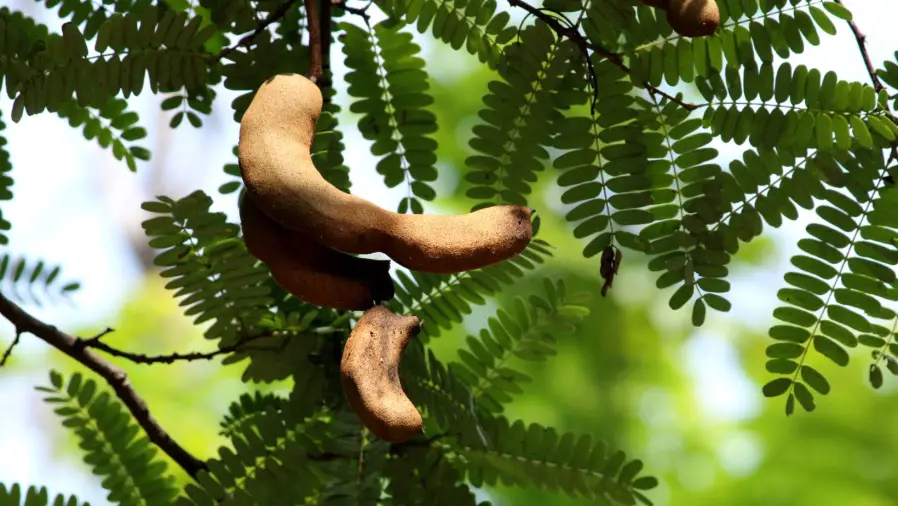Introduction
Welcome to the ultimate guide on how to start your very own tamarind plantation at home. Tamarind (Tamarindus indica) is a beautiful and exotic fruit-bearing tree that not only enhances the aesthetics of your backyard but also provides you with the pleasure of savoring its delicious and tangy fruits. This guide is packed with essential information, tips, and tricks that will help you embark on this exciting journey of growing tamarind right in your own backyard. Let’s dive in and explore the wonderful world of tamarind cultivation!

Table of Contents
- Introduction
- The Tantalizing Tamarind – A Brief Overview
- Selecting the Perfect Location-Tamarind Plantation
- Soil Preparation and Planting-Tamarind Plantation
- Watering and Irrigation-Tamarind Plantation
- Pruning and Training-Tamarind Plantation
- Pest and Disease Management-Tamarind Plantation
- Fertilization and Nutrient Management-Tamarind Plantation
- Harvesting and Yield-Tamarind Plantation
- Preserving and Utilizing Tamarind-Tamarind Plantation
- Benefits of Growing Tamarind at Home
- Frequently Asked Questions (FAQs)
- Conclusion
The Tantalizing Tamarind – A Brief Overview
Before we delve into the nitty-gritty of starting a tamarind plantation, let’s take a moment to understand this incredible fruit. Tamarind, native to tropical regions, is renowned for its distinct sweet and tangy flavor. It is used in various culinary dishes, beverages, and desserts worldwide, making it a highly sought-after fruit.
Selecting the Perfect Location-Tamarind Plantation
Choosing the right location for your tamarind plantation is crucial to ensure its healthy growth and fruitful yield. Tamarind trees thrive in warm and sunny climates, preferably in areas with well-drained soil. Additionally, the location should have sufficient space for the tree to grow freely and receive adequate sunlight throughout the day.
Soil Preparation and Planting-Tamarind Plantation
Proper soil preparation is essential to provide a conducive environment for tamarind trees to flourish. For a successful Tamarind Plantation at Home, ensure the soil is well-draining and rich in organic matter. In this section, we will guide you through the step-by-step process of planting a tamarind sapling and nurturing it during its initial growth phase.
Watering and Irrigation-Tamarind Plantation
To thrive, tamarind trees require adequate watering and irrigation. We’ll cover the best practices for watering your tamarind plantation, including the right frequency and techniques to ensure your trees stay hydrated and healthy.
Pruning and Training-Tamarind Plantation
LSI Keywords: Tamarind tree pruning, tamarind tree training, tree maintenance
Pruning and training are essential for maintaining the shape, size, and overall health of your tamarind trees. Learn the art of pruning to encourage optimal growth and increase the productivity of your tamarind plantation.
Pest and Disease Management-Tamarind Plantation
LSI Keywords: Tamarind pests, tamarind diseases, pest control, organic remedies
Tamarind trees can be susceptible to various pests and diseases. Understanding the common issues and implementing effective pest control measures is vital to protect your plantation and ensure a bountiful harvest. Discover organic remedies to combat pests and diseases without harmful chemicals.
Fertilization and Nutrient Management-Tamarind Plantation
LSI Keywords: Tamarind fertilization, nutrient requirements, organic fertilizers
Fertilization plays a significant role in enhancing the growth and productivity of tamarind trees. Learn about the essential nutrients required for tamarind cultivation and how to provide them using organic fertilizers to ensure the best results.
Harvesting and Yield-Tamarind Plantation
LSI Keywords: Tamarind harvest, fruit picking, yield per tree
The joy of harvesting your homegrown tamarind is unmatched. Understanding the right time to harvest, proper fruit picking techniques, and maximizing yield per tree are crucial aspects that we will explore in this section.
Preserving and Utilizing Tamarind-Tamarind Plantation
LSI Keywords: Tamarind preservation, tamarind usage, culinary applications
Tamarind has a wide range of culinary applications, and preserving this delightful fruit is essential to enjoy its flavor year-round. Discover various methods of preserving tamarind and explore creative ways to use it in your favorite dishes and beverages.
Benefits of Growing Tamarind at Home
Apart from the sheer pleasure of growing tamarind, there are several benefits to cultivating this fruit at home. From promoting sustainable practices to enjoying fresh and chemical-free fruits, learn about the advantages of having your own tamarind plantation.

Frequently Asked Questions (FAQs)
Q: What is the ideal climate for growing tamarind?
A: Tamarind thrives in warm and tropical climates with temperatures between 68°F to 95°F (20°C to 35°C).
Q: Can I grow tamarind in a pot?
A: Yes, you can grow a tamarind tree in a large pot, but it may limit its growth compared to planting it directly in the ground.
Q: How long does it take for a tamarind tree to bear fruit?
A: Tamarind trees typically take 3 to 4 years to start bearing fruits after planting.
Q: Is tamarind a drought-tolerant tree?
A: Yes, tamarind trees are moderately drought-tolerant once established, but they still require regular watering.
Q: Can I use tamarind leaves for culinary purposes?
A: Yes, tamarind leaves are used in some culinary dishes for their unique flavor.
Q: How do I know if my tamarind tree is affected by pests or diseases?
A: Look out for signs of wilting, yellowing leaves, or unusual spots, and consult a horticulturist for proper diagnosis and treatment.
Conclusion
Congratulations! You are now equipped with the knowledge and expertise to embark on your journey of starting your very own tamarind plantation at home. The joy of watching your trees grow, bloom, and bear fruits will undoubtedly be a rewarding experience. Remember, patience, care, and dedication are key to a successful tamarind plantation. So, roll up your sleeves, get your gardening tools ready, and create a lush oasis of delicious and exotic fruits in your backyard!
